What is the discriminant anyway? |
A quadratic equation is an equation that can be written asax ² + bx + c where a ≠ 0
What is the formula for the Discriminant? |
discriminant= b² − 4ac
Example of the discriminant
- Quadratic equation = y = 3x² + 9x + 5
- The discriminant = 9 ² − 4 • 3 •5
 Imortant pre requisites
Imortant pre requisitesTo understand what the discriminant does, it's important that you have a good understanding of
What a quadratic equation is:
Answer: A quadratic equation is an equation in the form of y=ax2+bx+c where ane0 Read more here on this topic
What does the graph of a quadratic equation look like:
Answer: A parabola.
What is the solution of a quadratic equation:
Answer: The solution can be thought of in two different ways.
Algebraically, the solution occurs when y = 0 . So the solution is wherey=ax2+bx+c becomes 9=ax2+bx+c
Graphically, since y = 0 is the x-axis, the solution is where the parabola intercepts the x-axis. (This only works for real solutions).
In the picture below, the left parabola has 2 real solutions (red dots), the middle parabola has 1 real solution (red dot) and the right most parabola has no real solutions (yes, it does have imaginary ones)
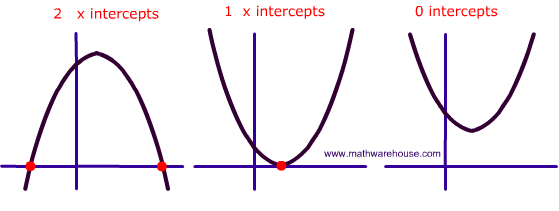
In the picture below, the left parabola has 2 real solutions (red dots), the middle parabola has 1 real solution (red dot) and the right most parabola has no real solutions (yes, it does have imaginary ones)

What does this formula tell us? |
Answer: The discriminant tells us the following information about a quadratic equation:
- If the solution is a real number or an imaginary number.
- If the solution is rational or if it is irrational.
- If the solution is 1 unique number or two different numbers
| Value of the discriminant | Type and number of Solutions | Example of graph |
| Positive Discriminant b² − 4ac > 0 | Two Real SolutionsIf the discriminant is a perfect square the roots are rational. Otherwise, they areirrational. | 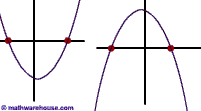 |
| Positive and a Perfect Square b² − 4ac = perfect square | Two Real RationalSolutions. | 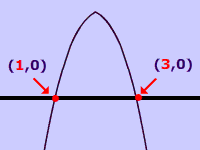 |
| Positive and anot a perfect square b² − 4ac = not a perfect square | Two Real IrrationalSolutions. | 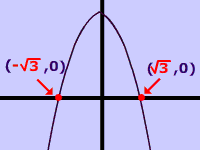 |
| Discriminant is Zero b² − 4ac = 0 | One Real Solution |  |
| Negative Discriminant b² − 4ac < 0 | No Real Solutions Two ImaginarySolutions |  |
- Example 1
- Quadratic Equation: y = x² + 2x + 1
- a = 1
- b = 2
- c = 1
Since the discriminant is zero, there should be 1 real solution to this equation. Below is a picture representing the graph and one solution of this quadratic equationb2−4ac22−4(1)(1)=0 Graph of y = x² + 2x + 1
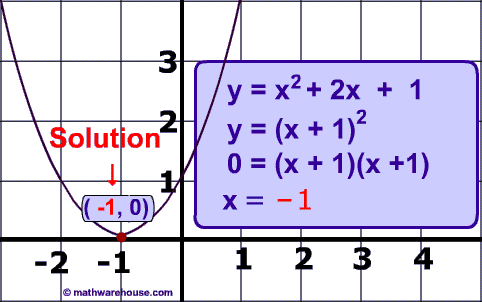
No comments:
Post a Comment